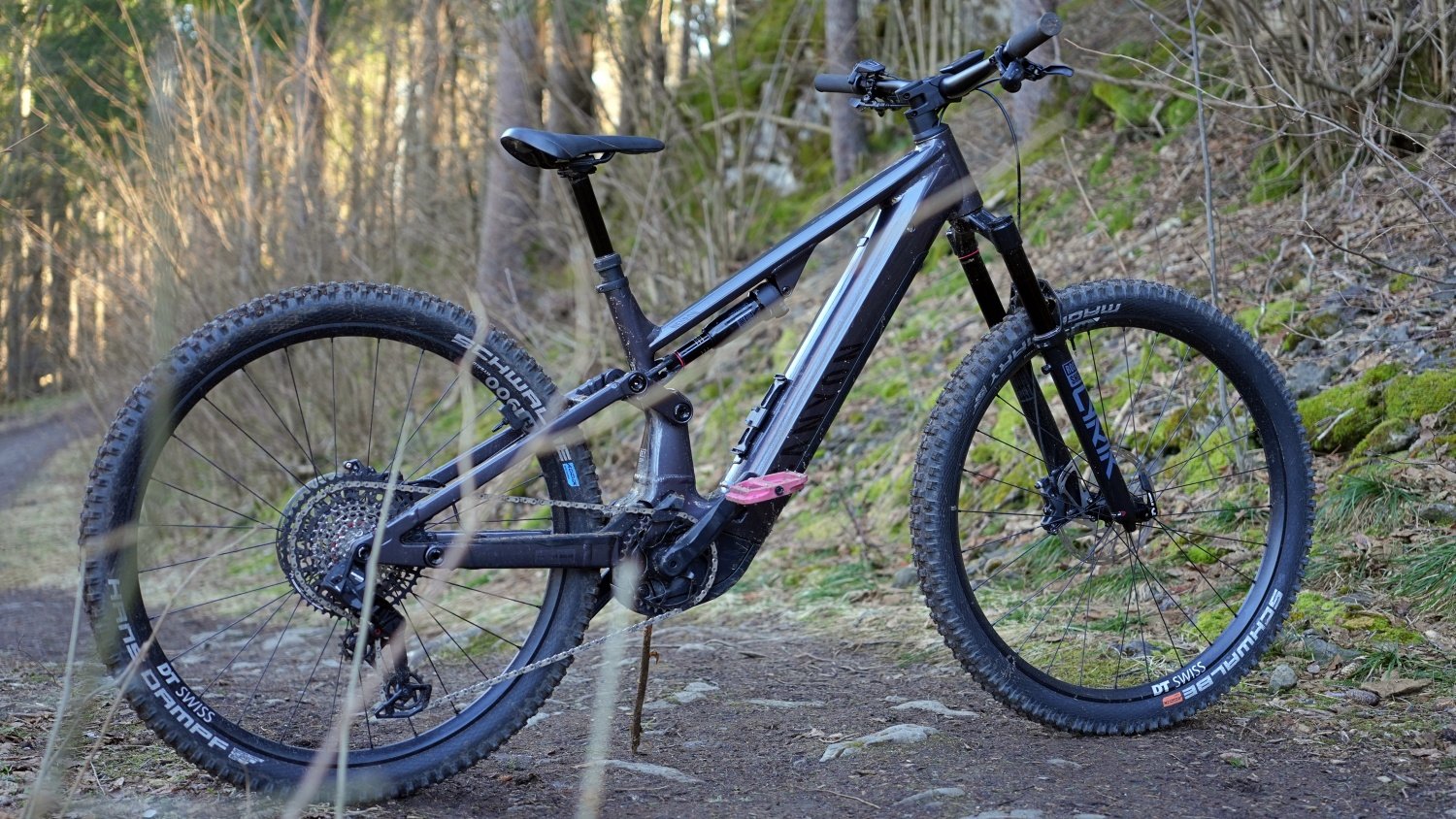- Motor
- Bosch Performance CX gen5
- Battery
- 600 or 800 Wh plus 250 Wh extender
- Fork Travel
- 150 mm
- Rear Travel
- 145 mm
- Weight
- AL9 weight to 25.4 kg with pedals
- Price
- €3.799-5.499
The Neuron:ON is the less aggressive, shorter travel Canyon model. In under two years, we’ve seen the full-power Neuron:ON CF and mid-power Neuron:ONfly being introduced. Both are 29er bikes with 140 mm suspension travel.
For the last couple of years, the Neuron:ON was almost exclusively available with a carbon frame. With one exception. The Neuron:ON AL 6 was a carry-over model based on the previous generation frame. It had steeper frame geometry, shorter travel, basic specs and a Shimano motor. So, the time was ripe for an updated alloy Neuron.
|
2024 Canyon Neuron:ON CF 9 |
2024 Canyon Neuron:ONfly CF 9 |
The new 2025 Canyon Neuron:ON AL 9 |
A different Neuron:ON
At first glance, the new Neuron:ON AL looks similar to the Neuron:ON carbon, the frame design is recognizable. But as we look closer, we’re surprised by how different they are. The AL model has a detachable battery, which no other Neuron currently has. And it’s the 800 Wh battery that is lighter than the 750 Wh battery found in the CF model. Mind you, the cheaper AL 7 gets the 600 Wh battery.With such a big, detachable battery and an alloy frame, the Neuron:ON AL is of course a heavier bike than its carbon-based siblings. Weighing about 25 kg without pedals isn’t bad, but it’s not what we expected from a lighter mid-travel bike. That’s because the new Canyon Neuron:ON AL no longer is the mild full-suspension bike we expected it to be.
|
|
|
Specs and price
The Neurons always had lighter 29er tyres, mostly the Schwalbe Nobby Nic. A few models also had the Hans Dampf on the front. The new Alloy Neuron:ON has the burlier Schwalbe Magic Mary with the Soft rubber compound on the front wheel. This is a pretty heavy tyre offering lots of grip. It’s combined with a faster rolling Hans Dampf on the back. The two smaller frame sizes come with 27.5” wheels.This is a setup we usually find on 160/150 mm travel bikes. So, what would be more fitting than extending the suspension travel? This bike now has 5 to 10 mm more travel, 145 mm at the back and a 150 mm fork. The AL 9 demo bike has a Rockshox Lyrik fork, a more rugged and heavier fork than the Pike and Fox 34 forks found on the carbon models.
|
|
|
|
The cheapest AL 7 cost €3.799. With the cheaper Rockshox Psylo Silver fork, it’s unlikely to keep up with the two others when descending fast and hard. Step up to the AL 8 at €4.999 for at more trail capable package. It should be equally as capable as the more expensive model. The AL 9 that we tested is €5.499. It gets electronic shifting and better brakes.
Geometry
A longer travel bike with burlier components does of course need an updated frame. We rode the Neuron AL 9 in size M. For us at just over 180 cm, it did perhaps feel a tad small. But I might just prefer it over size L. The slacker 64.5* head angle and longer 455 mm chainstays contributes to the 1.255 mm long wheelbase.|
|
|
Motor system
The cheaper Neuron:ON AL 7 comes with the Bosch PowerTube 600 Wh battery, but it can be upgraded to the 800 Wh battery found on the AL 8 and AL 9. All bikes will accept the PowerMore 250 Wh range extender.The bikes do of course have the Boch Performance CX 85 Nm gen5 motor. This is a fine motor that is easy to control in high assistance modes. If you keep the cadence up, it offers lots of power. Read more about the motor here.
|
|
|
|
Riding the Canyon Neuron:ON AL 9
The new alloy Neuron doesn’t feel like a lighter mid-travel bike anymore. And that’s how it must be, I think. The aluminium frame carrying a big, detachable battery will never be light. So why not design the bike to match the heavier chassis?With the longer rear end, we could climb every test-hill in comfort. The balance is shifted slightly forwards on this new frame, making it a great climber.
|
|
|
|
The Neuron:ON AL isn’t as nimble and light-footed as the other Neurons. We notice the longer chainstays and added weight when trying to lift the front wheel on the descents. But it’s not bad either. It’s still easy to maneuver, the bike can be thrown around when going fast through corners. This is the fastest descending and most stable Neuron I’ve ever ridden.
Conclusion
This is a much more capable and confidence inspiring ride than I expected it to be. The changes to frame geometry and suspension travel can be felt. Is the bike a tad slower when pedaling above cut-off speed? I guess so, it does have slower rolling tyres. But that’s a minor inconvenience. The bike climbs very well and there is little holding us back on the descents. The heavier Neuron:ON AL has become a more capable bike, and the improved descending capabilities makes it a bit more all-round than the carbon Neurons. The cheaper Neuron is also my favorite Neuron, at least when things get steep.|
|
|
|
